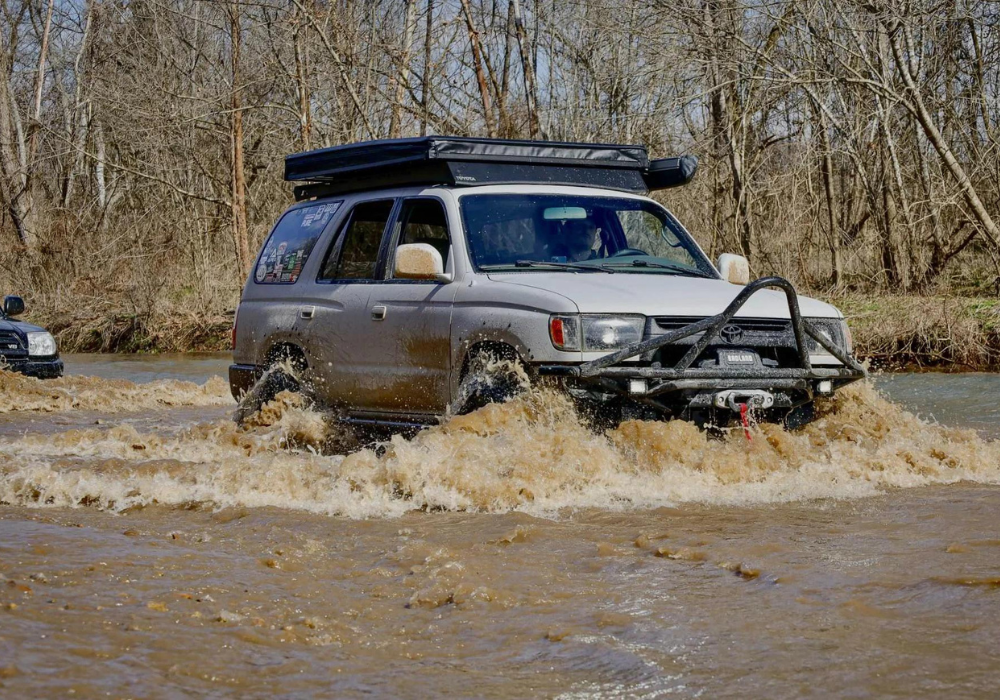
Top 20 Overlanding Mistakes to Avoid
Overlanding has surged in popularity.
People want immersive travel experiences, outdoor exploration, and long to disconnect from the digital world and reconnect with the natural environment.
Its rise in popularity can also be attributed to the growing accessibility of off-road vehicles and advancements in camping gear.
With as popular as it has become in recent years, there are undoubtedly mistakes being made.
My hope is that this article will benefit novices as well seasoned veterans in the off-road space.
I’ve decided to split these mistakes into two categories – Gear and Behavior.
That said, let’s jump right in and begin with gear mistakes…
It’s essential to carefully assess your equipment and ensure you have the necessary gear to handle any challenge you may encounter.
These equipment-related mistakes can impact comfort, safety, and reliability of any any off-road journey.
Table of Contents
Gear Mistakes
Confusing Rock Sliders with Running Boards
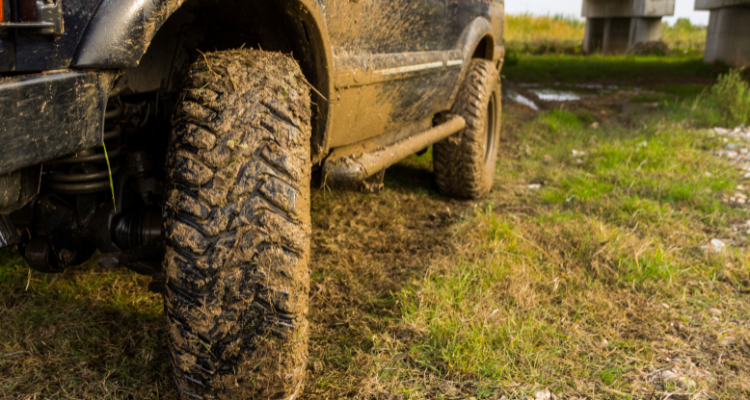
Let’s kick things off with a pet peeve…
I can think of a dozen instances of people getting hung up on or completely destroying their running boards because they thought they were the same as sliders. This affects everybody on the trail and can potentially ruin a trip.
Rock sliders and running boards serve different purposes on vehicles.
Rock sliders are heavy-duty protective bars mounted underneath the sides of the vehicle, designed to shield the body from damage when off-roading over rocks, stumps, and other obstacles.
Running boards on the other hand, are typically lighter and provide a step to assist with getting in and out of the vehicle or accessing the rack on top.
My 2008 Tacoma TRD Off Road and my 2020 4Runner TRD Off Road both came with running boards factory installed, rather than rock sliders.
Loading Down Your Vehicle without Organized Storage

We have limited space in our vehicles, and packing too much unnecessary gear can weigh us down, reduce fuel efficiency, and limit storage for essential items.
Beyond all that, when you don’t have your gear organized it makes getting or using anything a pain in the rear (pun intended).
Properly utilizing your pickup or SUVs bed for modular and drawer storage will be one of the best decisions you’ll make as you continue to build your rig.
Btw, here’s my Essential Car Camping Checklist.
Not Having a Real Satellite GPS or Phone
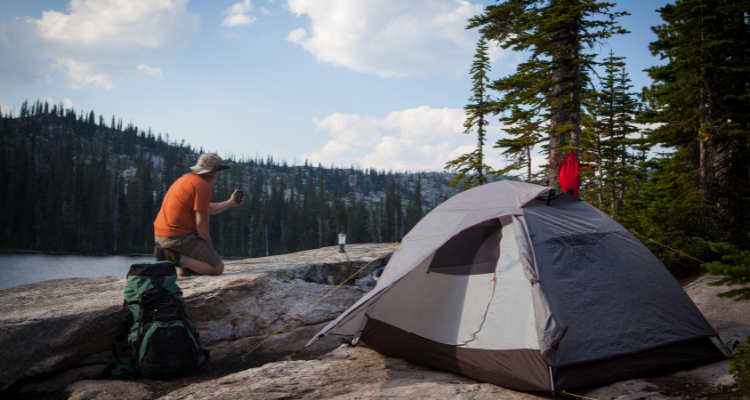
Poor maps, lack of road signs, and cell tower signal issues can lead to confusion and getting lost.
Staying in touch with others in case of emergencies when there’s limited cellular coverage can be a matter or life or death.
You should always have reliable communication devices, such as satellite phones, two-way radios, CB’s or emergency beacons.
True GPS and Satellite Phones don’t rely on cell towers like cell phones do; they actually use satellites.
GPS satellites circle the Earth twice a day in a precise orbit. Each satellite transmits a unique signal and orbital parameters that allow GPS devices to decode and compute the precise location of the satellite. GPS receivers use this information and trilateration to calculate a user’s exact location.
Check out this DIY Budget GPS Setup For OFF-ROAD & OVERLAND Trail Navigation – How To Guide & Parts
Forgetting the First Aid Kit
Overlanders should always have essential equipment on hand. More specifically, a First Aid Kit is a must for any adventurer not just overlanders.
Items such as:
Failing to carry these items can compromise safety during emergencies.
In every outdoor adventurer’s first aid kit, the following items are critical:
- Adhesive Bandages: Assorted sizes to cover small cuts, blisters, or minor abrasions
- Sterile Gauze Pads: For larger wounds that may require more absorbency or as a primary dressing
- Adhesive Tape: To secure dressings or bandages in place
- Antiseptic Wipes: Or solutions to clean wounds and prevent infection
- Tweezers: For removing splinters, ticks, or other small foreign objects
- Scissors: Medical scissors to cut tape, clothing, or gauze
- Disposable Gloves: Latex or nitrile gloves to protect against contamination during wound care
- Pain Relievers: Over-the-counter pain relievers such as acetaminophen or ibuprofen to alleviate minor aches and pains
- Antihistamines: Antihistamines for allergic reactions or insect bites
- Moleskin or Blister Treatment: Moleskin or blister treatment pads to prevent and address blisters
- Antibiotic Ointment: Or cream for treating minor cuts, burns, or scrapes
- CPR Face Shield: Or mask for protection during resuscitation efforts
- Emergency Contact Information: Emergency contact numbers, including local emergency services and personal emergency contacts
- Personal Medications: Any personal prescription medications or necessary medical supplies specific to individual needs
- Anti-Diarrheal: Diarrhea can quick lead to dehydration and dehydration can quickly become life threatening
- First Aid Manual: A compact first aid manual with instructions for common medical emergencies & basic first aid procedures
- Tourniquets: These are bands that are tied around an arm or leg when bleeding is uncontrollable due to a severe wound
It’s important to periodically check the first aid kit and replenish any expired or used items. My wife and I will do this once a year.
Additionally, I highly recommended you undergo basic first aid training to have the knowledge and skills to respond effectively in emergency situations.
Bookmark my 10 Pieces of Essential Survival Gear Every Adventurer Needs In Their Pack
Didn’t Bring Extra Fuel
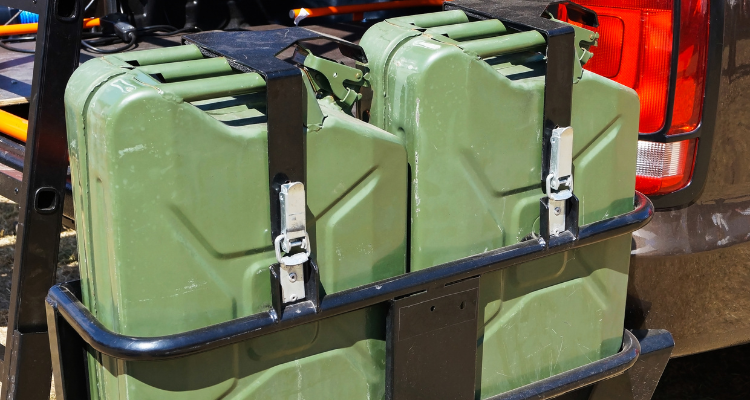
Overlanders often venture into remote areas with limited or no access to fuel stations.
Having extra fuel provides a safety net, ensuring you have enough supply to reach your destinations or navigate through unexpected circumstances such as road closures or longer distances between refueling points.
It enhances self-sufficiency and allows you to explore more remote and scenic routes with confidence.
Also keep in mind, that different fuel in different states will go stale quicker than others (I’m looking at you, California).
Check out the Rotopax 3 Gallon Gas Can for Your Bed Rack.
Not Enough Emergency Food & Water

When you’re overlanding you should always prioritize carrying appropriate water filtration systems or purification tablets to ensure a safe and sufficient drinking water supply.
Neglecting water storage containers can also limit their ability to carry enough water for remote stretches.
There are also several reasons you’ll want to bring water, here are a couple:
- By the time you’re thirsty, you’re already 2% dehydrated. Get a Lifesaver Jerrycan
- Cleaning gear or the kids is common when your overlanding. The Rinse Kit Pro is a must especially for families
Mechanics Kit
We often carry a range of spare parts, tools, and recovery equipment to address common vehicle breakdowns on the road and on the trail.
However, despite being prepared, unexpected mechanical failures can still occur, requiring creative solutions, assistance from local mechanics or your fellow off-roaders.
Here are some tools I never hit a trail without:
- Jack (HiLift or ARB Hydraulic Jack)
- Socket set
- Screwdrivers
- Hammer
Poor State of Equipment
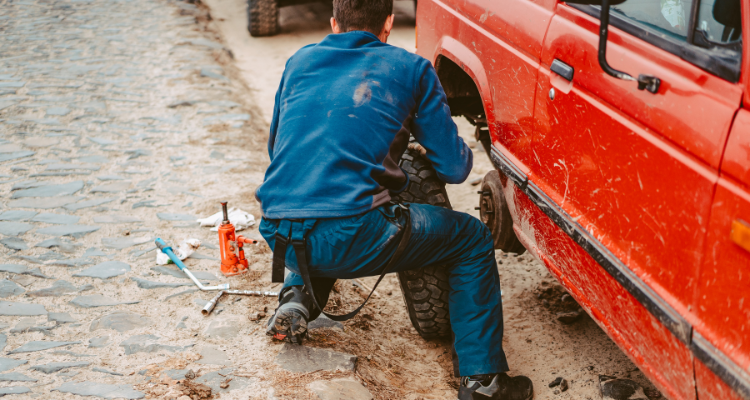
Dirty oil, frayed belts, cracked sidewalls etc. can ruin a trip in a hurry.
Neglecting regular vehicle maintenance can lead to breakdowns on the road.
Everyone, not just overlanders should properly maintain their vehicles, including regularly checking fluid levels, tire pressure, and addressing any mechanical issues promptly.
Here are 6 maintenance mods from my buds at TrailTacoma to make your life easier before, during or after a trip.
Lack of Essential Recovery Gear
Getting into a situation with a lack of traction is part of the game.
That said, overlanders should always carry recovery equipment like:
- Recovery tracks
- Tow straps
- Sturdy recovery winch & Accessories
- Shovel
- Jack
- Axe
Neglecting to have these tools can make it challenging to extricate a stuck vehicle in difficult terrain.
Find it online:
- MAXTRAX Boards (4) – Check Price
- Warn Winch (10k lb) – Check Price
- Deadman Land Anchor – Check Price
- Tree Saver Strap – Check Price
- Recovery Gear Bags and Storage: Check Price
- Hi-Lift Jack – Check Price
Inadequate Power Solutions
Overlanders often rely on power sources for charging devices, running equipment, and lighting.
Not having sufficient power solutions, such as portable solar panels or auxiliary batteries, can limit their ability to stay connected and powered up.
Here are a few portable power solutions to keep in your rig:
- Foldable Solar Panels
- Air Compressor
- Auxilary Battery
- Solar Generator
- Portable Gas Generator
- Dometic PLB40 Power Station: Check Review
- NOCO Boost Jump Starter: Check Price
These are common gear mistakes, but each journey is unique.
Overlanders can learn from the aforementioned mistakes and adjust their approach to make their travels safer, more enjoyable, and rewarding.
Now let’s take a look at the most common behavioral mistakes…
Behavioral Mistakes
Neglecting to Install Maps on Phones or GPS ahead of time
It’s important for overlanders and really anyone spending extensive time in the wilderness to pre-install maps on their phones and GPS devices.
Doing this will provide crucial offline navigation capability, especially in remote areas with limited or no cellular coverage.
Having pre-loaded maps ensures that overlanders can navigate accurately without relying on an internet connection.
Two online resources that explain how to upload maps to phones and GPS devices are:
- GPSFileDepot: This website offers a collection of free maps that can be downloaded and installed on various GPS devices, including Garmin units. They provide detailed tutorials and instructions on how to transfer and install maps onto the specific GPS device models.
- Gaia GPS: Gaia GPS is a popular mapping and navigation app for smartphones. Their website provides step-by-step guides on how to download and store maps offline within the Gaia GPS app, ensuring users have access to detailed maps even when they’re out of cellular range.
- GARMIN Tread Overland Edition Navigator: This is one of the most dialed, heavy-duty, all-In-one off-road GPS units we have ever seen!
These resources offer valuable information and instructions on how to pre-install maps on different devices, empowering adventurers to navigate confidently.
Entering Unfamiliar Territory without Research or telling anyone
If you’re reading this article, you are likely joining overlanding communities, both online and in-person, to connect with like-minded individuals and share experiences. That’s great!
This makes it even easier to let people know where you’re going if you’re solo, or to find other people looking for someone to adventure with.
If you visit some of the more popular trails, you’ll likely find people to join you and other off roaders to help you in a pinch.
Here are 10 Popular Overland / Off Road Trails to Hit This Year:
- Mojave Road – California
- Moab (multiple trails) Utah
- Washington Backcountry Discovery Route – Washington
- Black Bear Pass – Colorado
- Imogene Pass – Colorado
- The Georgia Traverse – Georgia
- Rimrocker Trail – Colorado / Utah
- Box Canyon Road – Arizona
- Ocala National Forest – Florida
- The Dunes – Oregon
- BONUS** (where it all began for me) Rubicon Trail – California
Not Knowing the Native Language or Having A Translator When Wheeling Internationally
Communication can be challenging when encountering different languages and cultures along the journey.
Overlanders may face difficulties in obtaining information, asking for directions, or interacting with locals.
Overlanders often rely on language translation apps, phrasebooks, or language learning resources to bridge communication gaps with locals.
They may also carry cultural guidebooks to understand and respect local customs and traditions.
Here are 4 Translator apps you can use offline:
Putting Yourself in a situation where you need a winch (and not having one at that)
Overlanders may lack knowledge of proper vehicle recovery techniques, such as using recovery points, employing snatch straps correctly, or understanding safe winching practices.
This can result in vehicle damage or personal injury.
Overlanders should carry recovery equipment like recovery tracks, tow straps, and a sturdy recovery winch.
Neglecting to have these tools can make it challenging to extricate a stuck vehicle in difficult terrain.
Veering from designated Trails
It’s important for overlanders to stick to designated trails to minimize their impact on the environment and preserve the natural beauty of the areas they explore.
Veering off the trail can lead to soil erosion, habitat disturbance, and damage to delicate ecosystems.
By staying on designated trails, overlanders contribute to sustainable and responsible off-roading practices, ensuring the enjoyment of these areas for future generations.
Not constantly trying to “find your line”
It’s important for overlanders to always be “finding their line” because it helps them navigate challenging terrain safely and effectively.
By assessing the terrain and choosing the best route, overlanders can avoid obstacles, minimize the risk of damage to their vehicles, and maintain traction.
Continually analyzing the path ahead allows them to make informed decisions, adapt to changing conditions, and ensure a smoother and more successful off-roading experience.
Overreliance on others and technology
Overlanders should always have backup plans in case of unexpected situations, such as alternative routes, emergency contacts, or alternative accommodations if their original plans fall through. Relying solely on technology for navigation and communication without backup plans can be risky. Technical failures or lack of signal can leave overlanders stranded or disconnected.
Overloading The Vehicle
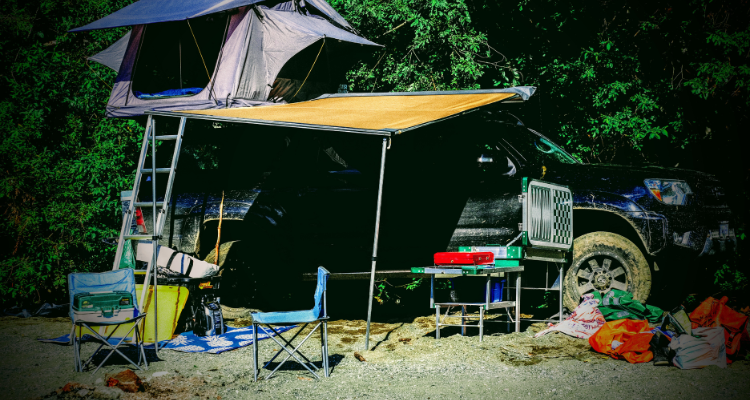
Overlanders often have limited space in their vehicles, and packing too much unnecessary gear can weigh them down, reduce fuel efficiency, and limit storage for essential items.
Be mindful of the weight distribution and payload capacity of your vehicle. Overloading can strain the suspension, affect vehicle stability, increase fuel consumption, and potentially lead to mechanical failures.
Overestimating Daily Mileage and Not Taking Breaks
Overlanders may underestimate the time required to travel between destinations, especially in remote areas with challenging terrain. This can lead to rushed driving, fatigue, and increased risks on and off road.
Setting unrealistic daily mileage goals can lead to fatigue, stress, and decreased enjoyment of the journey.
Plan for reasonable driving distances, considering trail conditions and available attractions along the way.
Lack of Planning & Backup Planning
Inadequate trip planning, including not researching visa requirements, border crossing procedures, or potential road conditions, can lead to delays, unexpected costs, or even denied entry.
Overlanders may fail to properly prepare their vehicles for the journey, such as not conducting thorough inspections, neglecting necessary repairs, or failing to install essential modifications like skid plates or upgraded suspension.
Overlanding combines off-road exploration with self-sufficiency and adventure. It involves journeying to remote locations, often in 4×4 vehicles and embracing the freedom of the open road (or trail). I’ve found that it also offers the opportunity to connect with nature, experience cultures, and escape the confines of conventional travel.
Embark on the adventure of a lifetime with overlanding!
Whether you seek solitude, adrenaline-pumping off-road experiences, or simply a chance to disconnect from the daily grind, overlanding opens up a world of discovery, self-discovery, and unparalleled adventures that will stay with you forever.
If you’d add anything to this list, please drop a line in the comments below.
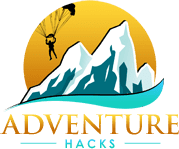

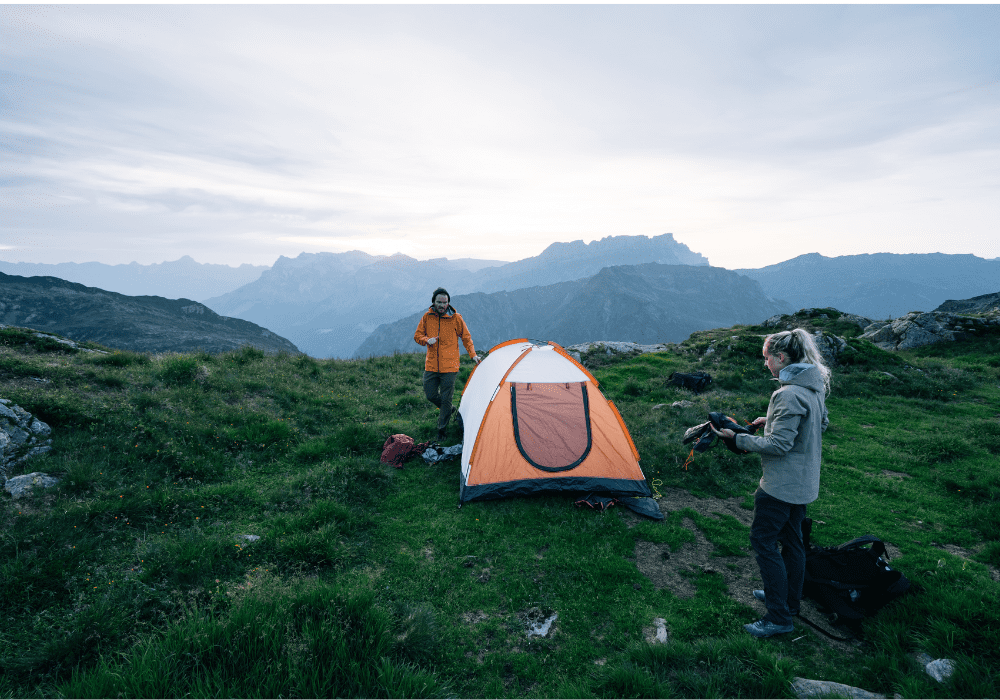
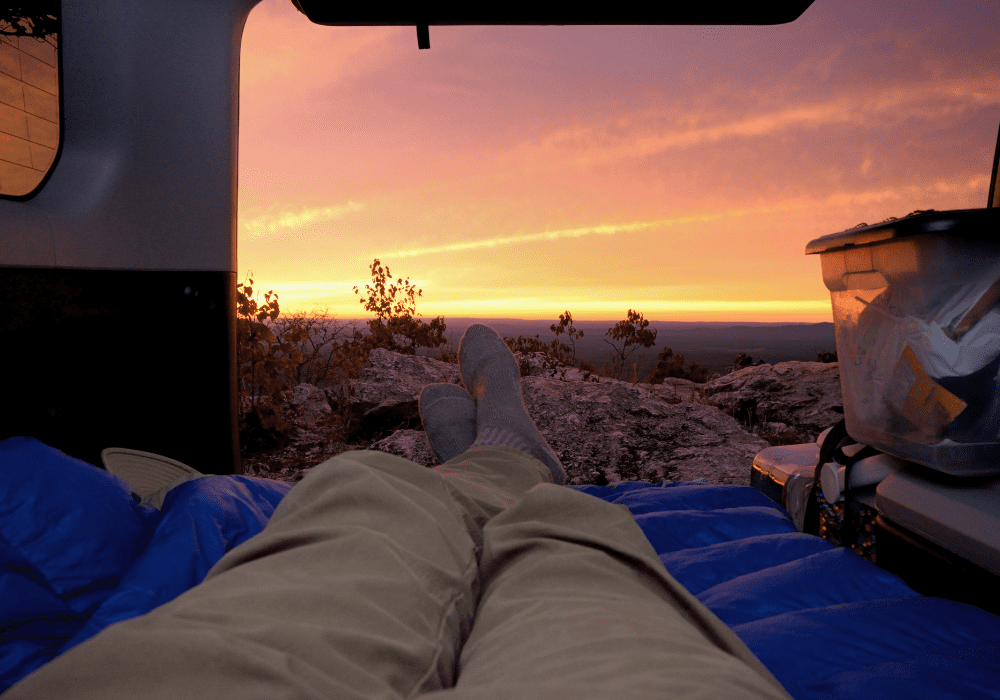

Akhilash
I think that the most important thing to remember when overlanding is to be prepared. This means doing your research on the area you’re going to be traveling to, making sure your vehicle is up for the challenge, and packing all of the supplies you’ll need.
drewgotit
what are your thoughts on the flat roof racks versus the basket style?
David Aston
Really depends on what you’re going to be doing or hauling. Having used both, I’ve found that the flat racks like the Prinsu are better suited for several styles of roof top tent and allows them to fully open. If you’re not going to have RTT, the basket style always gave me a bit more piece of mind when loaded down on a long haul. Something like the Gobi Racks might be worth looking into. That said you may get a bit more wind noise from the basket type. My wife is running the Prinsu on her 4runner at the moment and loves it.
TJMog
seems like the only time I use the term overlanding, is online, reading (great) articles like this or shopping for new gear. Whenever we’re out it’s usually just referred to as wheeling, camping etc. I cant be the only one??
David Aston
100% you’re not the only one. My father in law and I were just talking about this. We’ll use the term “Wheeling” or “4Wheelin” for sure. But more often than not, will usually refer to the trail or area. Something to the effect of, “want to hit the rubicon?” or “when are we going to Moab” it’s just implied and assumed we’ll be wheelin and likely camping.